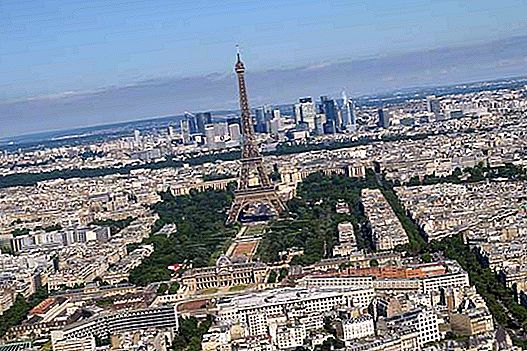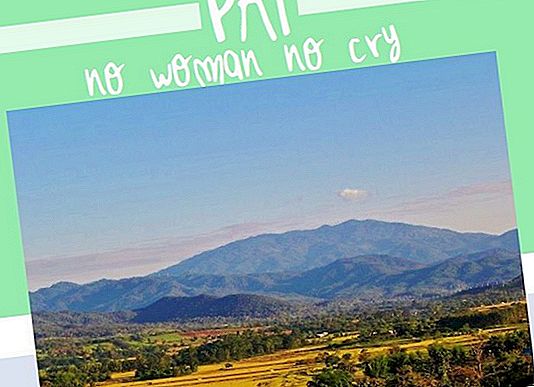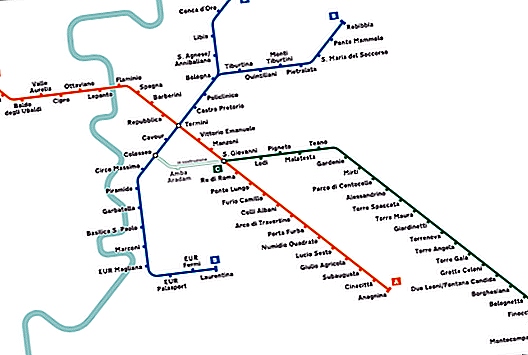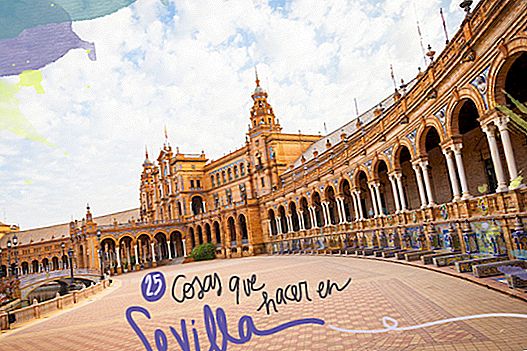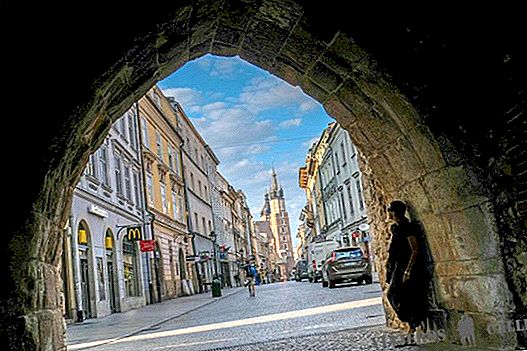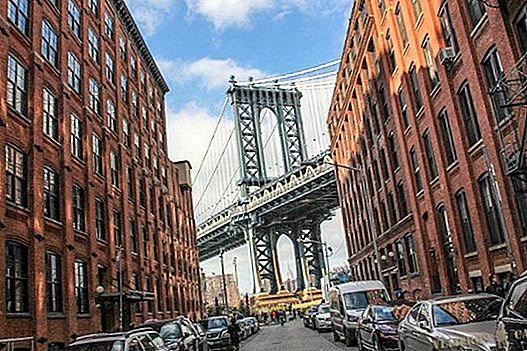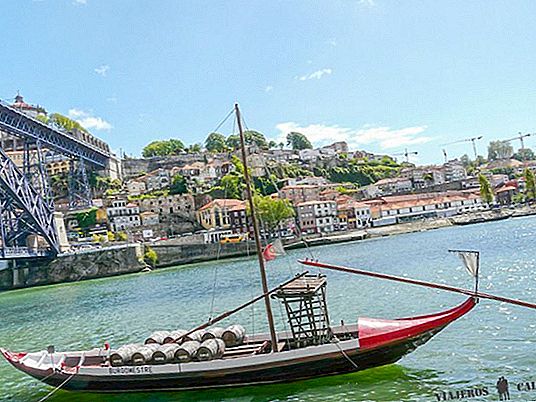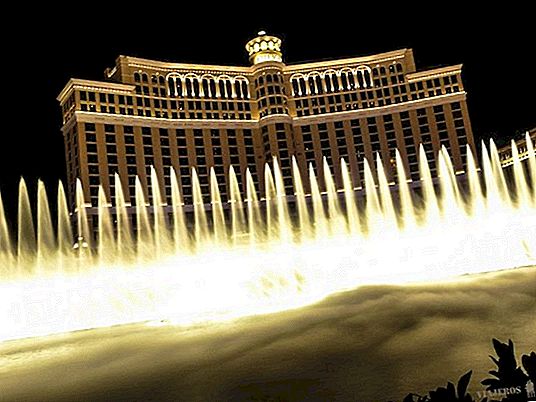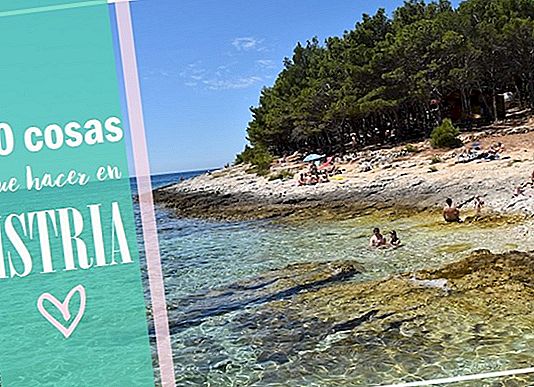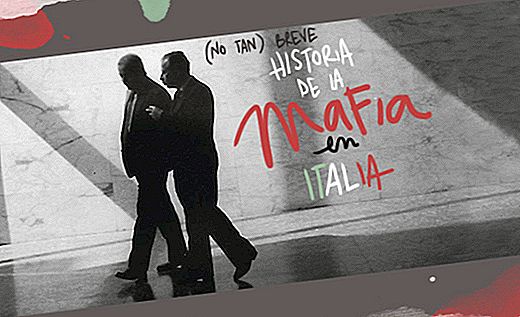
Oops, what muddy terrain I'm getting into. But after visiting Sicily, I know there is a question that surrounds the head of many travelers What about the mafia in Italy? As an Italian it seems at the same time sad and shameful that popular culture relates the word mafia with blockbuster movies like The Godfather or The Untouchables. They are undeniably masterpieces, but they have created an idealized (and even romantic) image of this criminal association and its figures that have done so much damage to my country. Therefore, I decided to work this post, mostly because movies are fiction but the mafia is a reality (and yes, today it still is).
So if you came here because you love the mobster roll, Hollywood style, you will be disappointed. We must speak clearly and start from the idea that the mafia has nothing admirable, was (and is) one of the most terrible cancers that Italy has suffered (and suffers) and that should be eradicated. Mafia is death. So clear. Not long ago there was quite a stir with the restaurant "The mafia sits at the table." It may seem excessive but, why would it be very rare to go to a restaurant called "Eta sits at the table"? Would you go? I'm sure not. This great ignorance around the Italian mafia (specifically the Sicilian), which unintentionally leads us to banalize its activity, is one more reason to write this article.
You know what is the pizzo? The omerta? Do you know the difference between Cosa Nostra and La Camorra? Do you know who Falcone and Borsellino were? Did Riina take it? Yes the answer is no, maybe this post with one (not so short) history of the mafia in Italy, I can help you understand more a long bloody chapter of Italy.
* Please keep in mind that what has been written here is only a small part of everything that revolves around the Italian Mafia. Some topics will be treated with synthesis, but I think you should at least know some key aspects. Anyway I will leave you links to deepen your air 🙂
Surprise! No, there is not only one mafia in Italy, there are different criminal organizations, depending on where they were born:
- Cosa Nostrain Sicily
- Quarrelin Campania
- Ndránghetain Calabria
- Sacra Corona Unita, in Apulia
- Anonymous Sequestriin Sardinia
Reddit.it
But be careful, do not fall into the error of thinking that outside these regions the mafia tentacles do not arrive. All have contacts and cells spread over virtually the entire peninsula (Turin, Milan, Genoa and Bologna being the main bases in the north).
We will analyze in detail the best known mafia in Italy: Cosa Nostra Siciliana.
If we look at the past of Sicily, land conquered by numerous and different cultures and peoples (Phoenicians, Greeks, Romans, Arabs, Normans, Spaniards ...), it is easier to understand the problem. The Sicilians have become accustomed to having foreign leaders and chiefs, to whom the people imported rather little, so they learned soon not to trust the authorities and base your area of trust in the family. Yes, the family was the most important thing, neither church, nor state, the fundamental thing was blood and honor.
They say that the "guilty" of the birth of the mafia was Carlos III: in 1738 after a terrible drought and famine in Calabria, thousands of Calabrians arrived in Sicily to survive. They swept away all the food they found in their path (in fields, fruit trees ...) and the king looked away, without protecting the Sicilians. That is when some emerge “picciotti” patrols, hired armed men who monitor and protect the property of farmers.
We give momentarily a to know the figure of repentant gangster (pentito) Tommaso Buscetta, whose testimony helped to bring to light the true structure of the mafia clans. (From Buscetta we will talk in detail later, do not worry).
The organization of Cosa Nostra is quite simple: it consists of different families that are hierarchically constituted in ranges (there is a capo at the top, a sottocapo, 2-3 consiglieri and the famous "picciotti", a fairly large group that handles, say, dirty work). Each family "reigned" over a certain geographical area, either entire towns or neighborhoods of larger cities.

Wikipedia.org
These clans historically followed a code of honor formed by 10 Commandments":
1- Prohibited to appear directly to a person who is part of the mafia. If necessary, it must be done through a third person.
2- You will not want the wife of your neighbor.
3- Prohibited any kind of friendship with the police.
4 - The true man of honor will not be seen by bars and social circles.
5- Be available at any time, even if the woman is about to give birth.
6- Punctuality is required categorically.
7- You have to respect the wife.
8- You have to tell the truth to any question and in any situation (within the mafia field, of course, if not, the law of the omertá reigns).
9- Although you can kill, extort and traffic, you can never steal money from other people or members of other families.
10- The last commandment contains the rules that a person must meet to be part of the Cosa Nostra. For example, you cannot have any family members in the police, or have sentimentally betrayed your wife or lack ethical and moral values (touch your comb).
There are three fundamental ideas of the doctrine of this organization:
- OMERTÁ
The concept of "omerta" is a pact of silence that prohibits reporting externally on any matter related to an organization issue. Among the Cosa Nostra gangsters the concept of honor is sacred (yes, it seems like a joke) so being considered a traitor is worse than jail or death. When the youngest hitmen of the mafia families became part of the clan, they had to overcome a ritual in which the photo of a saint was burned while swearing: “I swear to be faithful to the Cosa Nostra and, if betrayed, burn my flesh as this stamp burns. ”
- PIZZO
The "pizzo" is a kind of rate (although I would call it rather extortion) to which the businesses of a city or area are subject. Simply put: everyone has to give a percentage of the profits to get protection and keep working. Almost no one reported this abuse, if they did they put their business and even their family at risk.) As it seems a concept from another era, today the pizzo remains a reality, luckily, less and less frequent.
Speaking of pizzo I want to remember Libero Grassi, a textile entrepreneur who not only refused to pay the pizzo, but did so publicly with a letter addressed to his extortionist that was published in a local newspaper.
Translation of Libero Grassi's letter
That gesture was not only brave, but it became a true declaration of war from a simple citizen to the dome of the Mafia. Although at first the public opinion turned to him, thanks also to his participation in a television program where he tells his story, soon everyone forgets Libero, all but the mafia that murders him with 4 shots. Here you can read his story in more detail.
The most terrible thing (and what makes you understand the strength of the mafia even more) is that the vast majority of businessmen in Palermo, where Libero Grassi was from, instead of supporting him, they bothered him to go “wash the dirty rags ”Where it shouldn't.
Today, although it is not something that has been completely eradicated, the pizzo is much less common. There are even platforms like Addiopizzo (goodbye pizzo), an association absolutely contrary to the payment of any type of mafia extortion. Its motto is "a town that pays il pizzo is a town without dignity." Stickers can be seen at the local business entrance where they clearly express that they do not pay.
- BRUTALITY
Finally the brutality, which characterized the attacks perpetrated by the Cosa Nostra in the twentieth century (especially with the arrival of Salvatore Riina, better known as Toto Riina). Throughout its history there were more than 500 civilian deaths (more than 5,000 if we count the members of the mafia families). Among this dreadful number are some of the personalities who fought the most against the Sicilian Mafia:
- This is the case of the anti-mafia activist Peppino Impastato, one of the first to denounce the existence of this criminal group, which also belonged to a family related to the Cosa Nostra. On May 9, 1978 he was previously stoned and then mutilated with an explosive.
- From the boss of the anti-mafia fight Carlo Alberto Della Chiesa, who flew through the air with his wife and driver on September 3, 1982.
- Judge Giovanni Falcone, one of the figures that fought the most against the mafia, killed in the Strage di Capaci on May 23, 1992 when, when passing through a tunnel on a highway near Palermo, a bomb exploded. His wife Francesca Morvillo and his escorts Rocco Di Cillo, Vito Schifani and Antonio Montinaro died with him and 23 others were injured.
- Paolo Borsellino, companion of Judge Falcone, also killed by the Cosa Nostra when, on July 19, 1992, a bomb exploded on the Strage di Via D'Amelio in Palermo. With him 5 bodyguards lost their lives (among which was Emanuela Loi, the first woman-police officer killed in service).
There are only 4 examples but there are countless magistrates, police officers, journalists and other "unbreakable" who had the same end. Without counting on those "killed by mistakes" or for having been confused by other people, or simply for being in the wrong place, at the wrong time.
More info: //it.wikipedia.org/wiki/Vittime_di_Cosa_nostra_in_Italia
We go back in time ... During the time of Mussolini, the mafia almost completely lost its power. Do not believe that he did it for being good people, rather because he could not bear that in Sicily there was a more powerful entity than him. Unfortunately there was a historical event that changed things radically: the WWII, Clear. And look where, the entrance to the war in Italy and especially the successive landing of the Allies on the coasts of Sicily favored (and not a little) the resurgence of the Cosa Nostra. How? Here I allow a clarification: the subject is very dodgy and I will have to synthesize a lot of history, which, to top it off, was never confirmed (although conspiracy theory has little, really).
Surely you already know that at the beginning of XIX century, there was a great Italian immigration (especially from Sicily) towards U.S. Along with the suitcases, illusions and dreams of many Sicilians, the Sicilian mafia also migrated (thanks to a few). This theme has a lot of chicha but if that, we will be reeling it on another occasion. The issue is that the Sicilian Mafia of New York and the Cosa Nostra always maintained a close commercial relationship. One of the key figures during World War II was that of Lucky Luciano that "supposedly" helped US military intelligence to convince the Cosa Nostra to stop sabotaging the allied ships (I already told you there was a lot of chicha!). And he provided them with contacts to allow them to land on the Sicilian coast. Officially there was never a deal with the gangster who, by the way, was in jail, but by chance he wanted him released in 1946 after serving only one third of his sentence and was deported to his homeland: Italy.
More info:
- //www.cienciahistorica.com/2015/02/03/lucky-luciano-mafia-ayudaron-aliados/
- //www.elcajondegrisom.com/2015/12/la-mafia-en-la-segunda-guerra-mundial.html
To this we must add other curious facts: after the end of World War II, many gangsters who had been imprisoned (or removed from Sicily) in fascist times, were not only released (or returned to their homes) but some went on to cover public charges as police chiefs or mayors. This is the case of Don Calogero Vizzini (Don Caló) who was appointed mayor of the town of Villalba and went on to support the government that for the first time reigned in Republican Italy: Christian Democracy. His example was followed by many gangster bosses. Mafia and State thus began a relationship outside the spotlights.
At the death of Vizzini (1954) emerges a new generation of gangsters that moves away, more and more, of the code of honor of the “perfect mafioso” that we saw before. The money that enters through drug trafficking It is very attractive and everyone wants to get a slice. Bloody years, wars between gangs and indiscriminate victims are approaching.
During these years the main earnings of the mafia came from two sources: heroin trafficking Y real estate speculation. A lot of money was moving, and there was no single figure leading the Cosa Nostra. In 1957, a summit of the main mafia families (Italian and North American) took place in Palermo that created a commission (dome) responsible for managing mafia affairs and the organization of different families. In short: the Italians wanted to enter the heroin business at all costs and the Americans wanted to collaborate with the Cosa Nostra who had contacts with politicians.
How can it be that such an organization was born, grew and lasted (and lasts) so long? Simply, because from its beginnings it always had contacts with the high spheres, either for political and / or economic interests. It is believed that with the Unity of Italy (1861) the mafia began to enter the world of politicization, especially supporting a politician in exchange for bribes.
However, it is after World War II when the State and the Mafia begin a true collaboration. I will not go into details because the subject is long and thorny. You may sound the political party "Christian Democrazia" or Giulio Andreotti. If you want more info look here:
- //elpais.com/internacional/2013/05/10/actualidad/1368210149_944865.html
- //www.eldiario.es/miradaalmundo/Andreotti-historia-Italia-negra_6_129547067.html
But what I am sure will sound to you will be one such Silvio Berlusconi. If you want to delve deeper into your relationship with the mafia, check out these articles:
- //elpais.com/internacional/2018/02/22/actualidad/1519313372_480674.html
- //www.eldiario.es/cultura/libros/Berlusconi-condenado-connivencia-Mafia-probada_0_231327577.html
And what about the Church? Ha! Here we could open an eternal debate, but let's leave it with the gangsters are very believers. And obviously the Church also, both in God and in Money. Of course, not all ecclesiastics closed their eyes and extended their hands, I remember, for example, Puglisi Pine, a Palermo priest murdered for his rejection of the mafia, but there were many cardinals who directly said that the mafia did not exist (and then charged large sums of money). Today the Vatican (at least the Pope) openly reject the gangsters.
More info: //www.eltiempo.com/archivo/documento/MAM-269182
The Judges Falcone and Borsellino were key to unmask the Cosa Nostra, especially in the face of public opinion. It was thanks to them that it was understood that the mafia problem traveled beyond the Sicilian coasts and affected the entire country (and that the state did not have clean hands). The key was the maxi process of 1986 in which dozens and dozens of gangsters were charged and convicted (of the 475 defendants, 360 were convicted, including Toto Riina and Bernardo Provenzano). Just don't think they ended up in jail immediately, they remained hidden for years and years.
The maxi-process against hundreds and hundreds of gangsters it was possible thanks to the so-called “pentiti” (Regretful), especially thanks to Tommaso Buscetta, whose family was exterminated by Toto Riina in one of the mafia wars.
Until then the Cosa Nostra had enjoyed an outrageous and frightening impunity (it is not a secret that among Toto Riina's friends were personalities with a lot of power in Sicily and even in the Government ...). But as I told you before, revenge was not long in coming.
In 1992 I was only 7 years old but I will never forget the confusion that was experienced in the first moments after attacks on Falcone and Borsellino, nor of the gag that Sicily and entire Italy finally decided to take off. Thousands of people took to the streets after the car exploded and the death of Falcone, his wife and his bodyguards. It was May 23, 1992.
Borsellino, companion and friend since Falcone's childhood, knew he would be next. "We are corpses that walk," he said and so it was: a short time later, a bomb placed in a car next to the house of the judge's mother killed him. Sicily had just lost another big one. It was July 19, 1992.
In the cry of "they have not been killed, their ideas walk on our legs" the Sicilians demonstrated a value that until then had been drowned by fear.
More info: //elpais.com/internacional/2017/05/20/actualidad/1495267024_359932.html
After years of being hidden and thousands of dead in his (not) conscience, the Great Boss He was jailed in early 1993 (Although keep an eye on the data: he managed to talk to his men from prison and coordinate more dirty plans). Come on, you can understand the power of these figures. By the way, he died on November 17, 2017 not without having left a last controversy among the Italians.
Although with the death of Riina the Sicilian Cosa Nostra lost the last representative of a cruel and bloody era, it does not mean that the organization has ceased to exist. Although it is true that in the times when Falcone investigated the operations of the Cosa Nostra, it played a fundamental role in the drug traffic and market, but today it is no longer the case. It still controls the sale of drugs at the local level, although the one in charge of carrying out the narcotics business in Italy is the Ndrangheta, the Calabria mafia.
More info: //www.bbc.com/mundo/noticias-internacional-40124922
All relate the Italian mafia with Sicily, there it emerged and there were written some of the darkest chapters of this criminal society. But nowadays the laurel wreath is taken by the 'Ndrangheta, whose existence you probably do not even have knowledge and I am sure that many did not even know it existed. It is considered one of the most powerful mafias in the world.
We already anticipate that there is not only the Cosa Nostra in Italy. Unfortunately there are several criminal organizations that are still active. These are:
- CAMORRA
You may have never heard the word Camorra, but believe me, today it has much more power than the Cosa Nostra and not only in the region of Campania where it originated. Unlike the previous one, among the different groups of “camorristas” there is no vertical hierarchical organization, much less a network of families: here each one goes free, organized in local clans, and as you can well imagine there are frequent wars between them (as well as bloody revenges).
One of the fundamental figures for the creation of the camorra was the return to the homeland of the Lucky Luciano boss who, exiled from the United States, is established in Naples.
The great part of Camorra business It focuses on the laundering of black money, rigged and awarded contracts (especially in construction), public garbage collection contracts, prostitution businesses and of course drug trafficking.
To better understand the Camorra, we recommend you read Roberto Saviano's book “Gomorrah”.
- 'NDRANGHETA
The Calabrian mafia organization that surprise! Today it is the strongest, richest and most feared in Italy. Unlike the previous mafias, the 'Ndrangheta, almost never mixed business and state (understood as contacts in the high spheres) and it was always for free. Nor was it ever to directly attack the representatives of the Italian state and say that it was known to move “in the shadows”, going almost unnoticed for a long time.
Today is the one that moves the drug business (They say it controls approximately 80% of cocaine trafficking in Europe) and is organized in family clans (cosche). This blood tie is the reason why it is very complicated for someone, repentant, to decide to collaborate with justice: it would be like betraying your own family. Literally.
Curiosity: the term 'ndrangheta comes from the Greek word "andragathia" (loyalty and courage).
- SACRA CORONA UNITA
Is he smaller of the mafia groups in Italy. It is headquartered in the Apulia region, in the south of the country. His field is essentially the smuggling (of weapons, cigarettes and drugs) and due to its geographical position, it is the "responsible" for trade illegally with the Balkan countries.
And we have reached the end. So far this article with the (not so brief) history of the mafia in Italy. Hopefully it has helped you to better understand this cancer of Italian society. We know that many subjects have been treated too superficially, but it is that one could write not only a book, but an encyclopedia about the Cosa Nostra, the Sicilian mafia and the Italian mafias.
Tip: I recommend two movies ... The 100 steps (which tells the story of Peppino Impastato) and Mafia only kills in summer (the problem of the mafia seen through the eyes of a child).
Our recommendations
Flights Cheap to Palermo: bit.ly/2Ei7yLX
Flights Cheap to Catania: bit.ly/2yC3LTt
accommodation cheap in Sicily: booki.ng/2Eiku4u
Stay withAirbnb and get€ 25 discount: here
Activities in Spanish in Sicily: bit.ly/2pRsrnf
Rent a car with the best discounts: bit.ly/2xGxOrc
Travel insurance IATI with a5% discount: bit.ly/29OSvKt
Articles about Sicily
- TRAVEL GUIDE TO SICILY BY CAR (2 WEEKS)
- THE BEST 25 THINGS TO SEE AND DO IN SICILY
- WHAT TO EAT IN SICILY? TYPICAL DISHES OF SICILIAN GASTRONOMY
- TIPS FOR TRAVELING TO SICILY (AND NOT FALLING IT)
- ROADTRIP BY SICILY. STAGE 3: FROM TAORMINA TO PALERMO
- HOW TO GET TO THE ROCK OF CEFALÚ
- 15 THINGS TO SEE AND DO IN CEFALÚ
- 15 THINGS TO SEE AND DO IN TAORMINA
- ROADTRIP BY SICILY. STAGE 2: FROM RAGUSA TO TAORMINA
- HOW TO VISIT THE ETNA FOR FREE AND ON TOUR
- 5 RESTAURANTS WHERE TO EAT IN CATANIA (GOOD AND CHEAP)
- 20 THINGS TO SEE AND DO IN CATANIA
- HOW TO VISIT THE ARCHAEOLOGICAL PARK OF LA NEÁPOLIS DE SIRACUSA
- 20 THINGS TO SEE AND DO IN SYRACUSE
- ROADTRIP BY SICILY. STAGE 1: FROM PALERMO TO RAGUSA
- 15 THINGS TO SEE AND DO IN RAGUSA
- TIPS FOR VISITING THE SCALA DEI TURCHI
- ERICE: HOW TO GET THERE, THE BEST THING TO SEE AND RECOMMENDED
- (NOT SO) BRIEF HISTORY OF THE MAFIA IN ITALY
- 20 THINGS TO SEE AND DO IN TRAPANI
- RESTAURANTS WHERE TO EAT IN TRAPANI (GOOD AND CHEAP)
- ONE DAY TOUR TO THE EGADA ISLANDS (FAVIGNANA AND LEVANZO)
- HOW TO GET TO THE CENTER OF PALERMO FROM THE AIRPORT
- 20 THINGS TO SEE AND DO IN PALERMO (SICILY)
- 10 RESTAURANTS WHERE TO EAT IN PALERMO (GOOD AND CHEAP)

